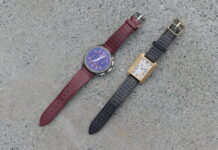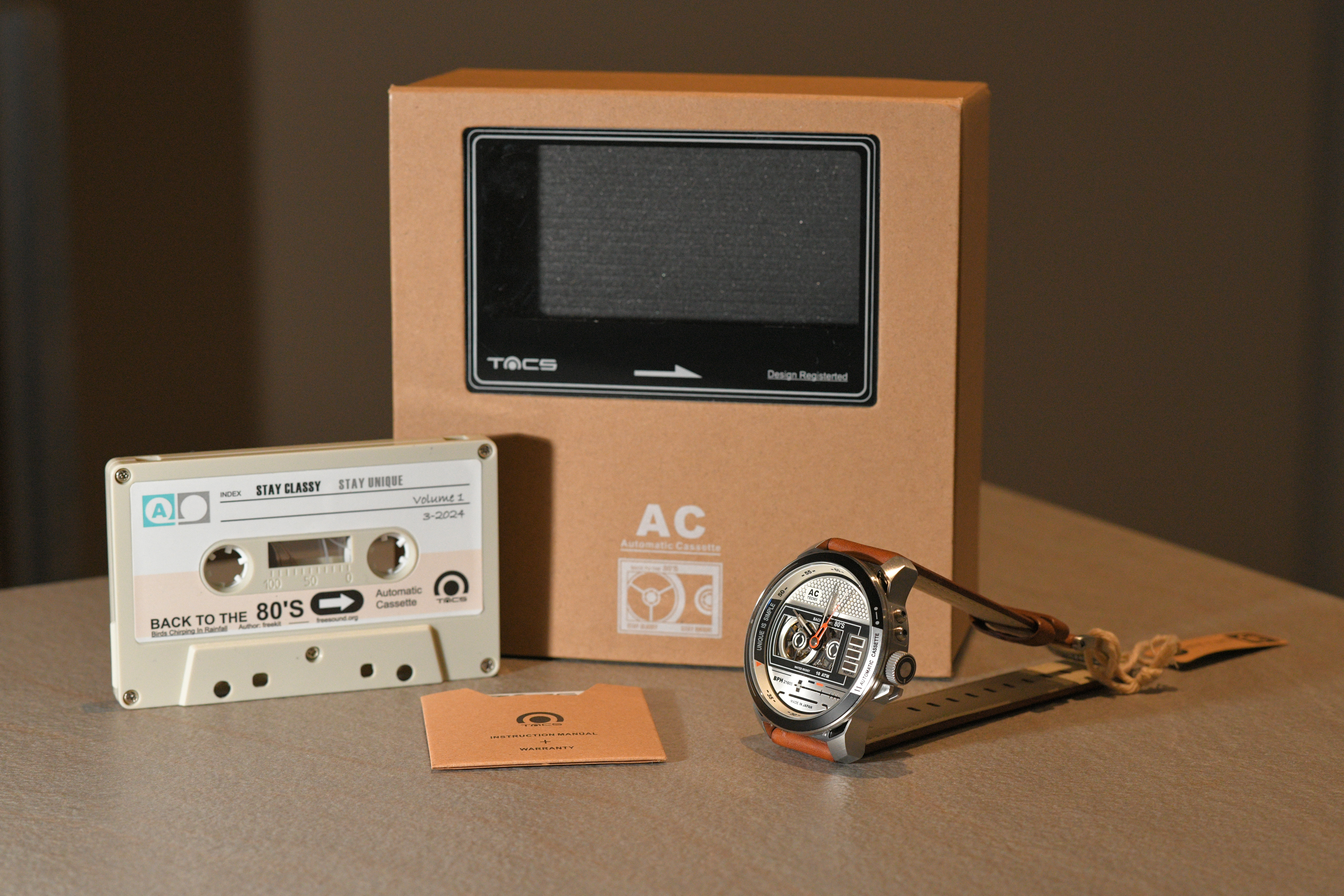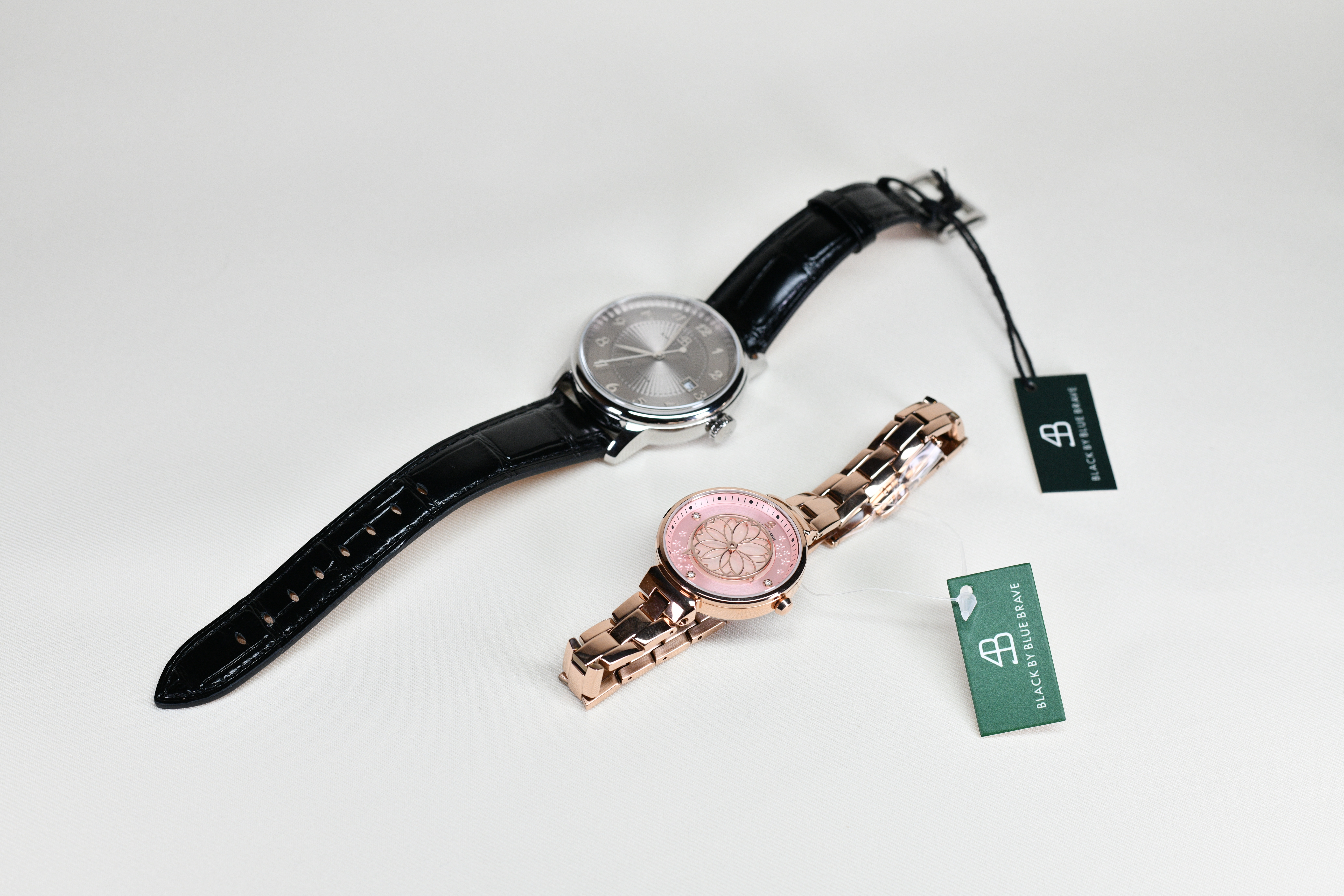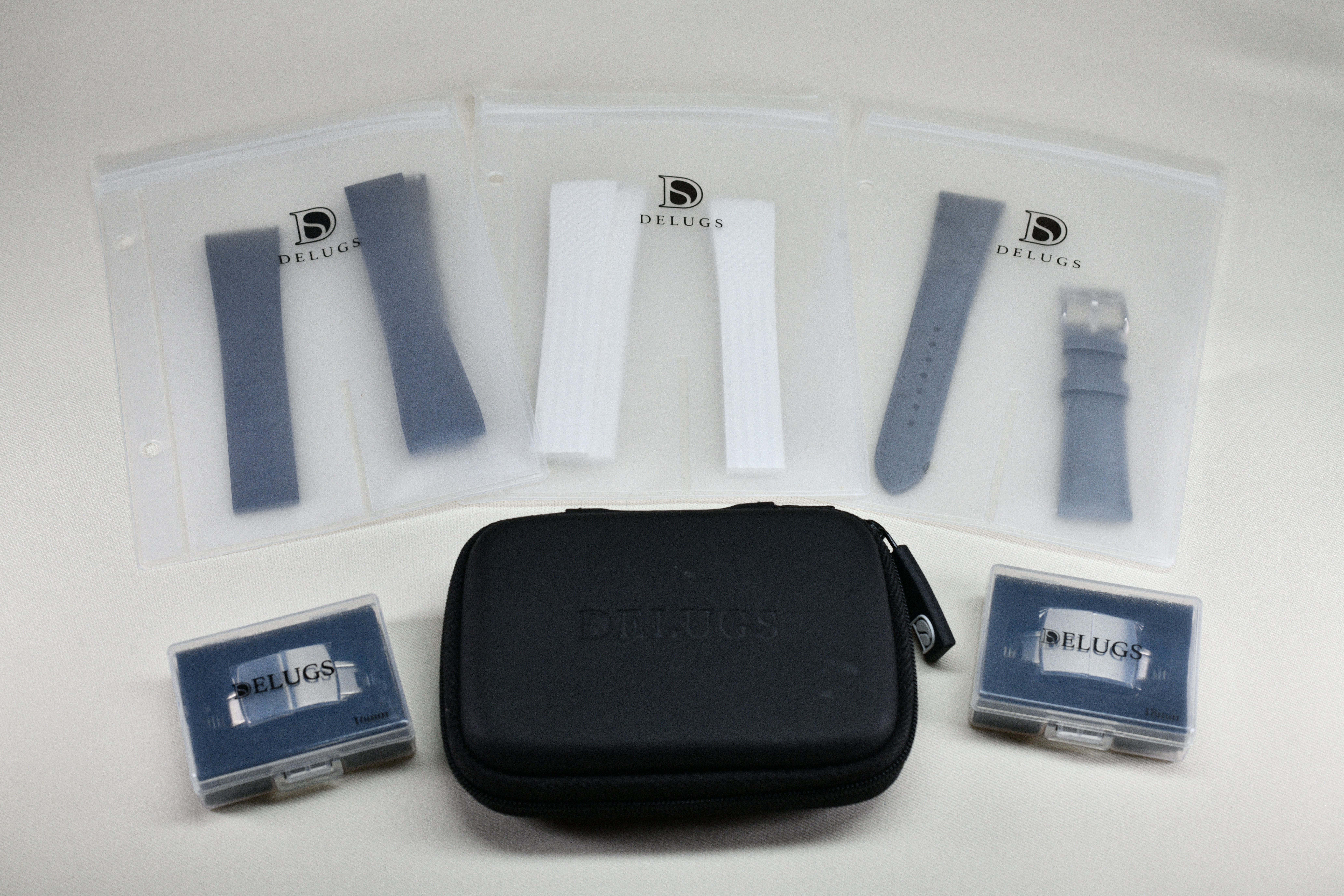Hello everyone, and welcome to another Singaporean review! This Sunday, I’m taking a look at the Aevig Balaur SE (Special Edition).

Aevig describes the Balaur as “a modern take on the Supercompressor style diver.” Let’s see if it’s any good!
Aevig – the Brand
Aevig describes themselves as “a company dedicated to bringing you high quality retro inspired watches”. Aevig was founded by Chip Yuen in 2013 after he successfully designed two project watches for the biggest online watch community, Watchuseek. For those wondering, the word “Aevig” is ancient Scandinavian spelling for evige/evigt, meaning eternal. In the same vein, Chip seeks to design and offer retro styled watches that possesses “timeless elegance”.

This particular Aevig model, the Balaur, has actually been in the making for quite some time! Renders of the Balaur first surfaced in 2013, where Chip shared his designs with the Watchuseek community – I believe it was in a bid to create a forum watch of some sort. Unfortunately, the watch faced issues with prototyping (more on that later), and Chip eventually shelved this design aside to concentrate on setting up Aevig. In 2015, it turns out that Sea-Gull (yes, that Seagull) has blatantly copied Chip’s design in their new release, the Seagull 816.582. After delivering unsatisfactory prototypes of the Balaur back then in 2013, Sea-Gull appeared to have took huge inspiration from the design of the Balaur, made the most minimal of alterations, and offered it up for sale on their own web-store. Naturally, the Watchuseek community, and the microbrand community at large, were furious, although I’m glad to say that the community really banded around long-time member Chip and Aevig during that time. For those interested in reading more about this saga, do read this Watchuseek thread here for some pretty damning evidence. Granted, Sea-Gull has been ripping off the designs of established luxury brands for quite some time now, but to steal a design from a microbrand and a watch enthusiast? That’s just below the belt, in my opinion.
Given the storied history of the Balaur, it’s a mini miracle that the design eventually got to production! I must applaud Chip’s courage and conviction in bringing the Balaur to life after all that has transpired. In part, this illustrates why I love microbrands so much – the passion their owners have for their projects is incredible.
Aevig Balaur SE – Build Quality
One thing’s for sure – the build quality of the Aevig Balaur is definitely much better than that of the Sea-Gull!

Firstly, the Aevig Balaur uses double-domed sapphire crystal to protect the watch face. Compared to flat or single-domed sapphire, a double-domed sapphire is stronger, and possesses less optical distortion (especially when you look at it from the sides). As aforementioned numerous times in my previous reviews, I’m a huge advocate of sapphire crystal due to their inherent scratch-resisting properties. Personally, I always look for sapphire crystal in my modern watches as it adds greatly to the durability of the watch. Furthermore, the underside of the sapphire crystal is AR-coated, preventing the bulk of any possible nasty reflections. Water resistance on the Balaur is 300M, which is appropriate given that this is classified as a diving watch.

The Aevig Balaur is powered by the Swiss ETA 2824-2, which needs no introduction. Commonly found in Swiss luxury watches from brands such as Longines, Oris, Omega, Tudor, etc, the ETA 2824-2 is probably the most desired movement to be had in a microbrand watch, as compared to its Sellita/STP/Miyota counterparts. A bit on the specifications: The ETA 2824-2 has 38 hours of power reserve, hacking feature, 4 Hz operating frequency, 25 Jewels and an ETACHRON regulator system. It is one of the most recognizable movements in the watchmaking industry, so getting it serviced should be no problem (aside from the cost, of course). In addition, the relatively high beat rate of the movement translate to a smooth sweep of the watch’s second hand, which makes the simple act of time-telling a sight to behold.

Aevig states that “The Balaur SE comes on an artisan, handmade leatherstrap as standard. The custom bracelet is a €89 extra option.” Personally, I’m not too impressed with the strap. It’s comfortable, but the premium feel is lacking. There’s this indecipherable plasticky feel to the strap, and the sides on the strap are not edge-painted/smoothened, making them rough to the touch and on the skin. We do get stitched strap loops, but all in all I’ll probably be swapping the strap out on this one thereafter. The strap is supposedly handcrafted in the Netherlands with Italian vachetta leather, but unlike Louis Vuitton bags, the vachetta leather here fell short of my expectations, to be honest. From a design standpoint however, I do have to give Aevig props for making the colour of the side-stitching golden, as it complements the rose gold bezel well.

In contrast, I was really impressed with the Swiss C3 lume on the Balaur! I think it’s one of the strongest lume on the watches I’ve reviewed thus far (the Vilhelm Talos being the other watch that comes to mind). Being a diver, I was already expecting strong lume, but still the brightness of it (consistently strong across the hands, indices, and bezel) blew my mind. Really good stuff here!
Overall, the Balaur SE is a really well-built watch. It has all the hallmarks of a great watch – double-domed sapphire, Swiss ETA 2824 movement, and great lume to boot. The strap leaves room for improvement, but if you don’t like the strap (like me), you can always simply swap it out with an aftermarket one!
Aevig Balaur – the Design
I think the design of the Balaur is really well thought out!

The dial of the Balaur is clean, yet packed with enough details so as to make it interesting. Firstly, we get applied indices, with a printed minute track on the dial, a design that not only looks and feels right, but also pays tribute to the dials of the supercompressors of old. Secondly, we get the Aevig logo and text printed on the 12 o’clock of the dial, with the model name and “automatic” in red at 6 o’clock. I like this configuration of text, as it helps balances out the dial while still drawing attention to the brand name due to the larger bold font. In addition, the rose gold hands complement the rose gold bezel on this Balaur SE perfectly. Lastly, I really like the syringe style second hand as well, as it reinforces the vintage vibe of the watch.

As it is a supercompressor watch, the Balaur features an inner rotational bezel operated by the top crown. The hour markings of the bi-directional bezel allows one to use it to read a second time zone – useful for those that travels frequently. In addition, the bevelled portion of the internal bezel has minute markings indicated on it, allowing one to be able to use the the watch to time events, if needed. So essentially, the watch has the functionality of both a GMT, as well as a chronograph! Also, I like the usage of red accents throughout the dial, in both the word “automatic”, as well as the 5 minutes intervals markings on the inner bezel – it gives a sporty and modern edge to an otherwise vintage styled watch. Lastly, the bevelled inner bezel, combined with the applied indices, gives the dial much-needed depth.

For those wondering, the Special Edition of the Balaur comes with a rose-gold bezel and hands, as well as red accents on the dial. The regular version of the Balaur (which is now sold out) had a stainless steel bezel, and stainless steel silver hands. As compared to the regular model, I much prefer the this Balaur SE version – the rose gold accents not only gives the watch a regal appearance, but to me is also more in keeping with vintage styling of old (which leaned very heavily towards gold colourways and accents). For those that want to see how the original Balaur looked like (as well as learn a bit more about the story of the Balaur), click here.

Both crowns on the Balaur are nicely signed and sized, resulting in easy winding/rotating of the watch/bezel if needed. I should also mention that the crown at the 4 o’clock (which operates the ETA 2824-2 movement within) screws down, and is such a joy to wind. However, the top-crown on the Balaur is not screw-down, which is a shame. As the top crown does not screw down, the inner bezel tends to get misaligned slightly especially when you accidentally brush the top crown against objects. While it’s not a hindrance in everyday usage, this can become a problem during diving where accurate reading of elapsed time is paramount. Elsewhere, I’m very pleased to see some contrast in case finishing, as there wasn’t really much contrast of texture on the dial. The main body of the case is brushed matte, with a thin polished stripe along the bevelled edges. It’s a small detail, but you know what they say – the devil is in the details!

The screw-down caseback is nothing much to shout at, but it does feature a nice artwork of the Balaur. In Eastern European myth and folklore, the Balaur is a multi-headed dragon – a depiction of the mythical creature can be found embossed on the caseback! We also get some relevant information, such as the fact that a Swiss ETA 2824-2 movement powers the watch, its 300M WR rating, and its all stainless steel composition. Overall, not the most interesting caseback I’ve seen, but not too shabby either!
Overall, I really like the design of the Balaur SE. I literally don’t have a single criticism of the design – if you are a regular follower of my reviews, you would know that this is rare. Aevig states that the development of the Balaur took 4 years + in the making, and it shows – this was no rush job, no money grab. Aevig managed to tread the nuance between updating the design with a modern look, but still paying homage to vintage styling really well. One of best thought-out watch I’ve reviewed thus far!
Shootout: Aevig Balaur SE vs Gruppo Gamma Chrononaut
When thinking about vintage-styled supercompressors, the Gruppo Gamma Chrononaut immediately comes to my mind. Seeing as it’s priced similarly to the Balaur as well, I felt that it was the natural choice to pit the Balaur against in this shootout!

In terms of build quality, there’s very little to choose from between the two – both are very solidly built watches. They both feature sapphire crystals (double-domed on the Balaur, box on the Chrononaut), strong Swiss C3 lume, and a decent 300M WR rating. The main difference lies in the movements. While both uses Swiss automatic movements, the Balaur utilizes the workhorse ETA 2824-2 movement, while the Chrononaut is powered by the STP 1-11. Although both movement shares similar specifications (beat rate, power reserve, etc), the ETA 2824 is generally seen as more proven and desirable, as compared to the newer STP 1-11. In terms of servicing, you will encounter no problems (except perhaps the cost) with the ETA 2824 – the same cannot be said with confidence of the STP 1-11 due to its lack of proliferation. On the market, the ETA 2824-2 costs more than the STP 1-11 as well – therefore, watches with the ETA 2824 tends to retail slightly higher than their STP 1-11 counterparts. As such, due to the ETA 2824 movement within the Balaur, I’ll say that on paper, the Balaur edges the Chrononaut slightly. However, the Chrononaut does feature twin screw-down crowns, making it much more suitable for actual diving purposes.

As for design, both watches features clean, well-thought out dials. I especially appreciated that the Chrononaut carried on Gruppo Gamma’s iconic styling and font seen in its more popular lines such as the Peacemaker and the Vanguard – one look, and it’s evident that it’s a Gruppo Gamma watch. There’s also a tool watch feel to the watch due to it’s utilitarian design. In contrast, the Balaur SE comes across as more dressy due to its rose-gold accents (bezel and hands). That being said, I do lean towards the Balaur SE due to its dial having slightly more depth than the Chrononaut. The Balaur SE features applied indices, and the inner bezel is bevelled, contributing to a dial with depth and sophistication. In addition, as the bezel of the Balaur contains minute markings, the inner bezel can be used to time events as well, unlike the Chrononaut which only features hour markings.
The Chrononaut is priced at $650 USD (~$885 SGD), while the Balaur SE retails for 550 Euros (~$879 SGD), excluding VAT. In my opinion, both watches are well-built, well-styled by well-loved brands. Ultimately, which watch is better for you depends on your personal preference. If you’re looking for a tool watch, especially for diving purposes, the Gruppo Gamma Chrononaut is probably the better option. However, if your taste leans towards the dressier side, and (like me) are unlikely to ever go diving, I’ll say that the Aevig Balaur SE might suit your needs better, especially as an everyday watch – it’s something that would look good in both a suit as well as a T-shirt and jeans.
Conclusion – so the Aevig Balaur SE “shiok” or not?
Hell yes. The design didn’t exactly set my loins on fire upon first sight (unlike the Aevig Valkyr), but the watch is incredibly well-thought out. It’s a timepiece that grows on you – the more I wore it, the more I appreciated it. If you’re looking for a supercompressor-styled watch, the Aevig Balaur should be near the top of your shopping list. Thank God Chip decided to go through with production for the Balaur in the end!

For those interested in the Aevig Balaur SE, you can purchase one here.
Specifications:
Material: 316L stainless steel
Dimensions: 42mm width x 49mm length
Lugwidth: 22mm
Thickness: 13.5mm
Movement: Swiss ETA 2824-2
WR: 300m
Crystal: double domed sapphire with AR on inside
Lume: Swiss C3 (green)
Strap: custom artisan leather strap 80 x 125mm
P.S Do check out the new “Discounts!” page for exclusive discounts for Wahsoshiok readers! More brands will be added very soon – stay tuned!
P.S.S If you haven’t already, do follow my social media channels on Facebook here, and on Instagram here!
P.S.S.S Screw Sea-Gull.





























